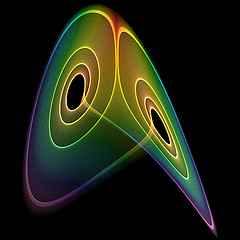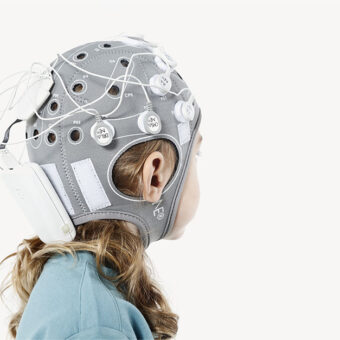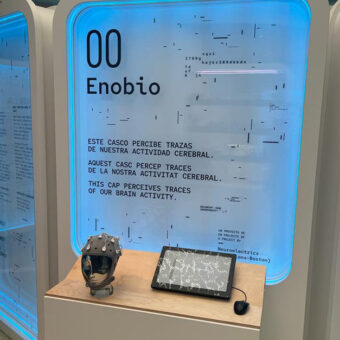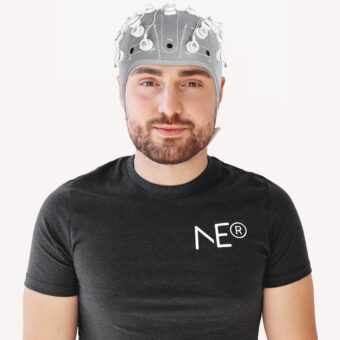One of the holy grails of EEG, along with dry electrodes, is the idea of single-channel EEG. Or rather, useful single-channel EEG. It’s very easy to record EEG from a single channel but making sense of the data and building a useful application around it is not. The reason that single-channel EEG is so attractive is not just ease-of-use but the relationship between ease-of-use and the amount of data that can be reasonably recorded.
When it comes to EEG, more channels (electrodes) are always better, having a dense network of electrodes allows us to create spatial maps of activity which brings EEG into the realm of brain imaging. See Michel and Murray for a nice overview of the this topic. As we know EEG (along with MEG) has far and above the best temporal resolution of all techniques used to study the brain. If we add full-head dense electrode arrays we also have decent spatial resolution.
This is an extremely powerful and as yet underexploited tool in neuroscience but it has a major drawback, by increasing spatial resolution we decrease ease-of-use and comfort while increasing the cost. This goes against our philosophy of making EEG accessible to all and useful outside of the lab through the Enobio platform and leads back to our reasons for this goal. The beauty of EEG is that, of all possibilities for measuring brain activity, it is currently the only one that can conceivably be packaged in a miniaturised, light, comfortable and low cost package. This directly addresses one of the major obstacles in neuroscience today, lack of data. We typically only have data for patients who have already presented with serious symptoms (because brain imaging is expensive and difficult). We don’t know very well what “normal” brains look like and how they evolve over the life time. We have a good idea but what’s missing is a database with 10s or 100s of thousands of subjects of all ages.
The solution for us is obvious, cheap, medical grade EEG on a massive scale but to make this happen we need to reduce the number of electrodes to make the process user friendly and robust. The end point of this is single channel EEG but what can we reasonably achieve with only one channel?
The general feeling in the research community is not a lot but more and more people are betting on “more data” over “good data”. Consumer grade products already exist such as Neurosky the original single channel system) and Muse and Melon (3-4 electrodes as far as I can tell). With these devices the emphasis is on making it easy to use and cheap enough for consumer apps and I think there is a lot of value in this (it will drive down costs) but the most interesting (and perhaps controversial) example is the iBrain form NeuroVigil. Founder Philip Low claims to be able to classify brain states and responses with a single channel that other groups have been struggling with using dense EEG arrays for many years. The work is based on his PhD which recently became public after a long patent related embargo and appears to be a simple classification of states based on the most prevalent frequency band in a normalised spectrum for a given epoch (using epochs of 30s). What’s interesting is that the classification is in temporal space although the feature is in frequency space. This work focussed on sleep in zebra finches but he has since moved on to humans and is investigating the impact of different compounds for drug development and is also working on BCI applications with Stephen Hawking.
It will be interesting to watch where this will lead as apparently v3.0 of the iBrain is about to enter clinical trials.
I think it’s worth noting though that the features themselves (at least in the original version) are quite standard and that many of the assumptions about EEG, the high-pass filter effects of the skull for example, are also quite standard so maybe there is some room for new models and further improvement here.
This is a very interesting topic for us and includes topics such as Dynamical Systems and Compressive Sensing (See an earlier NE post for some pointers on this) where some very interesting research is being carried out on signal analysis with very low spatial resolution.



